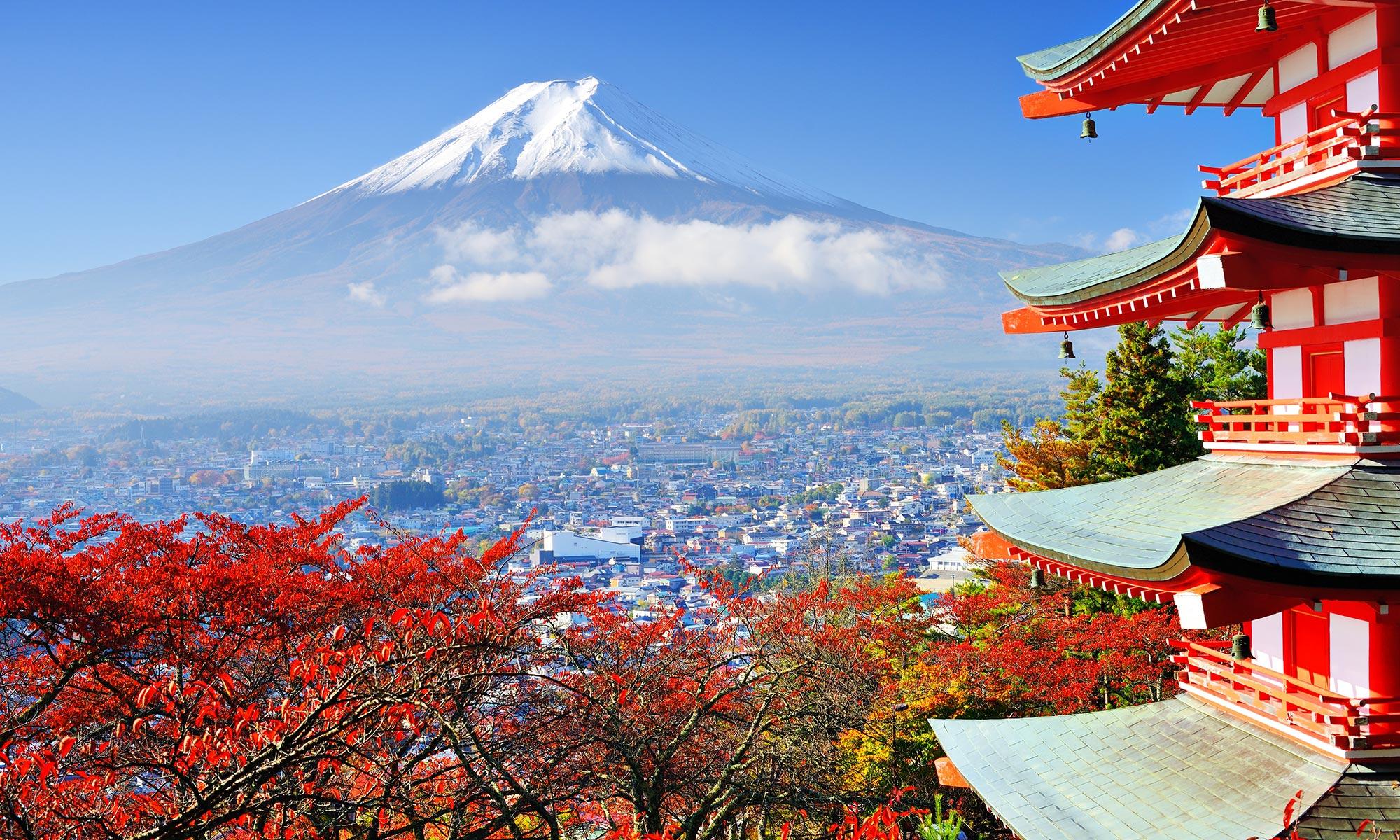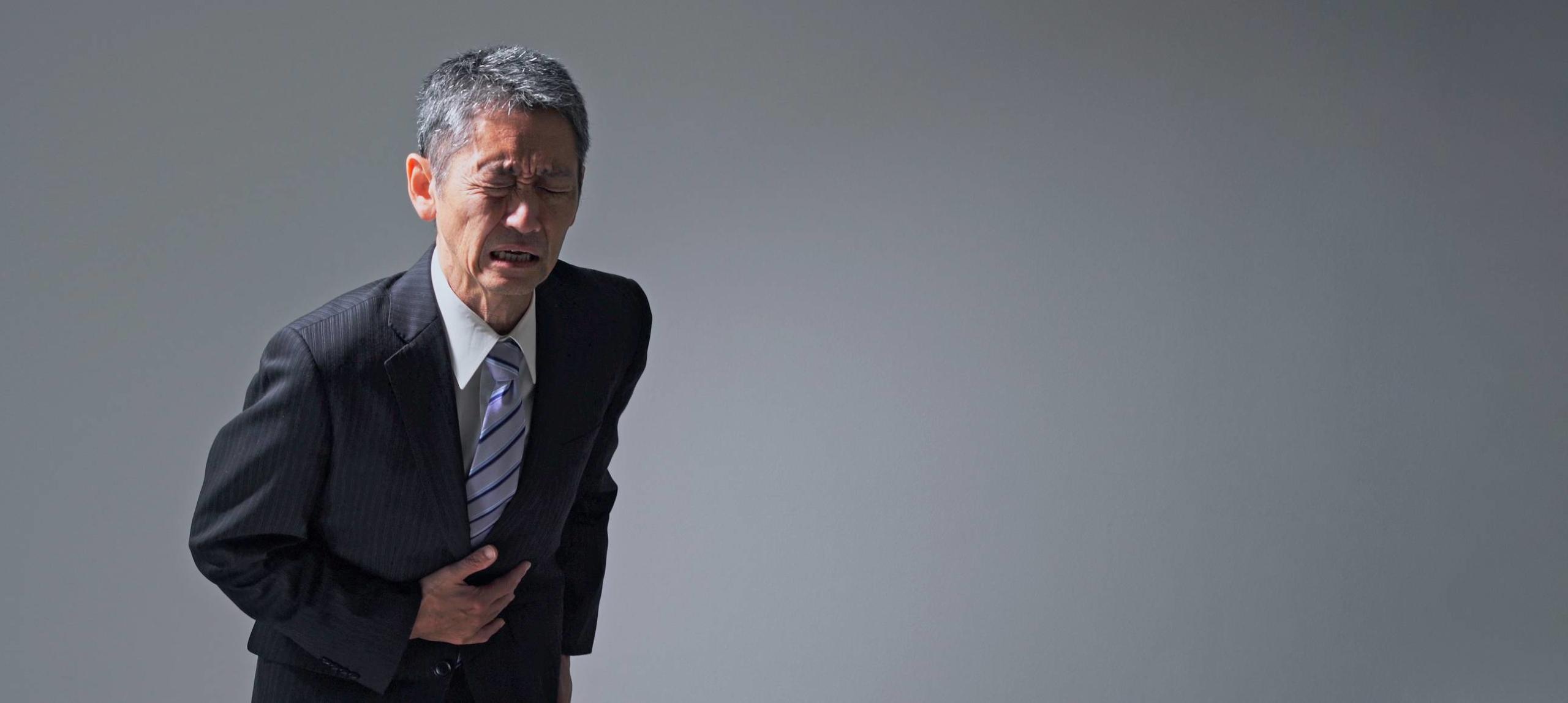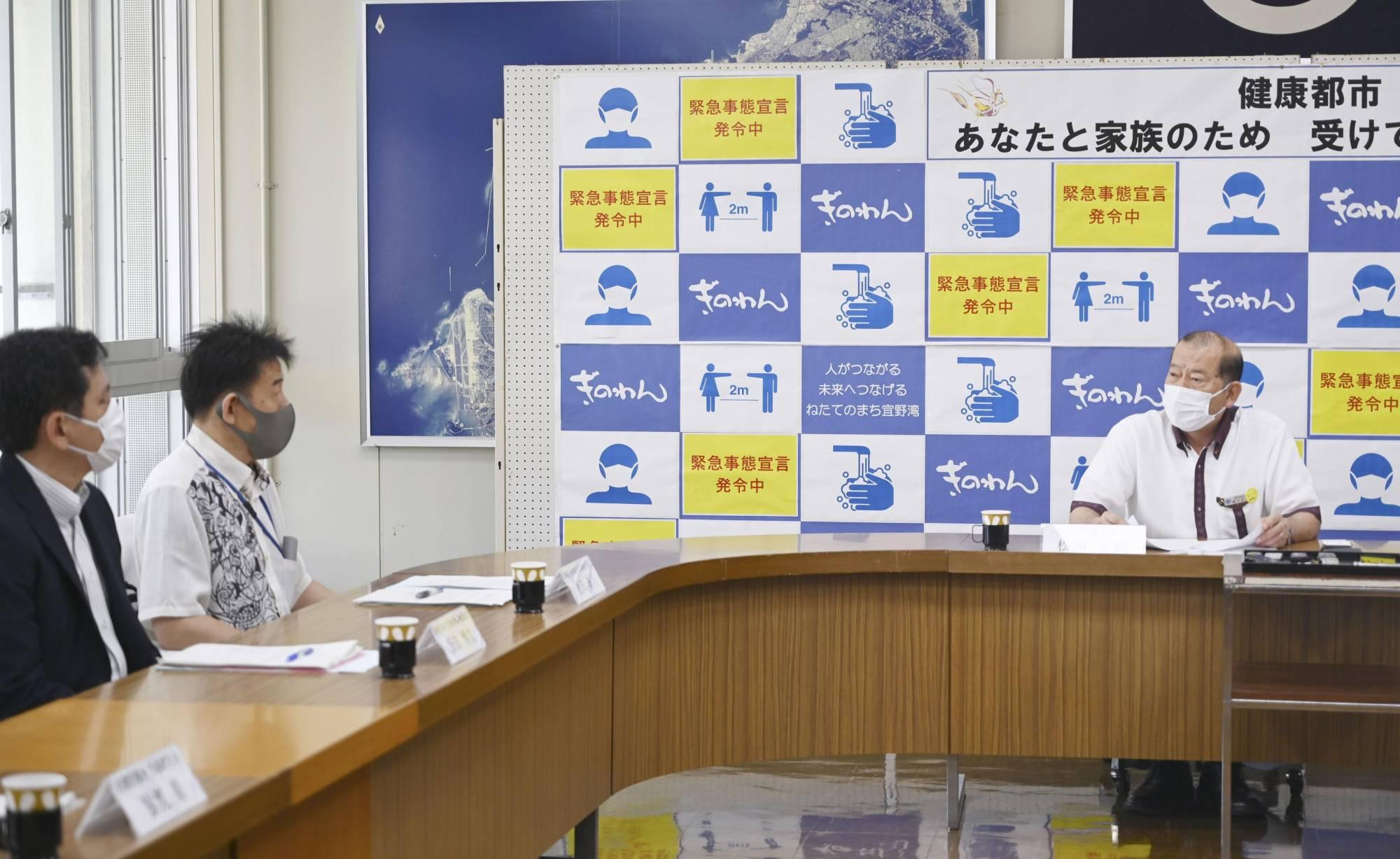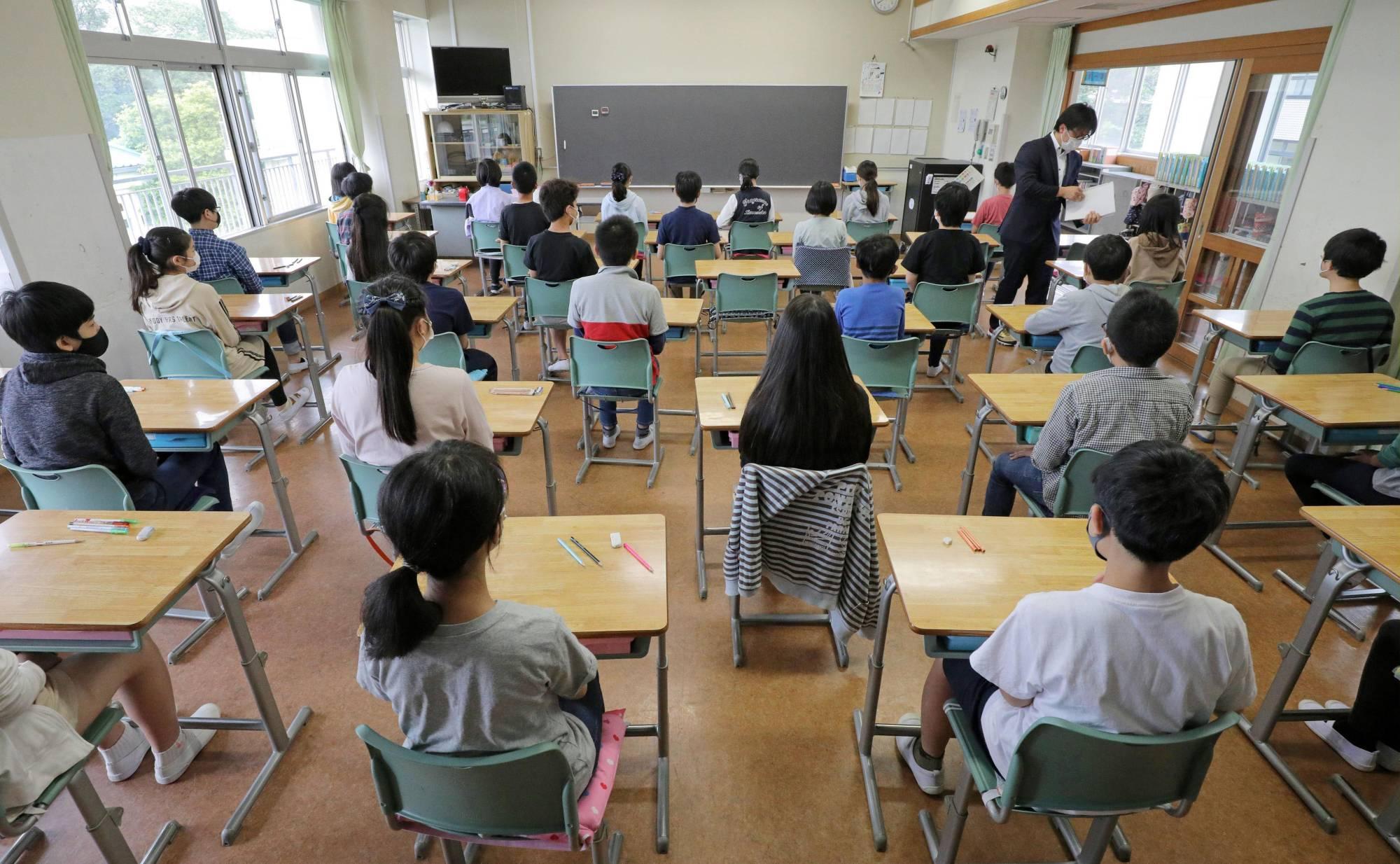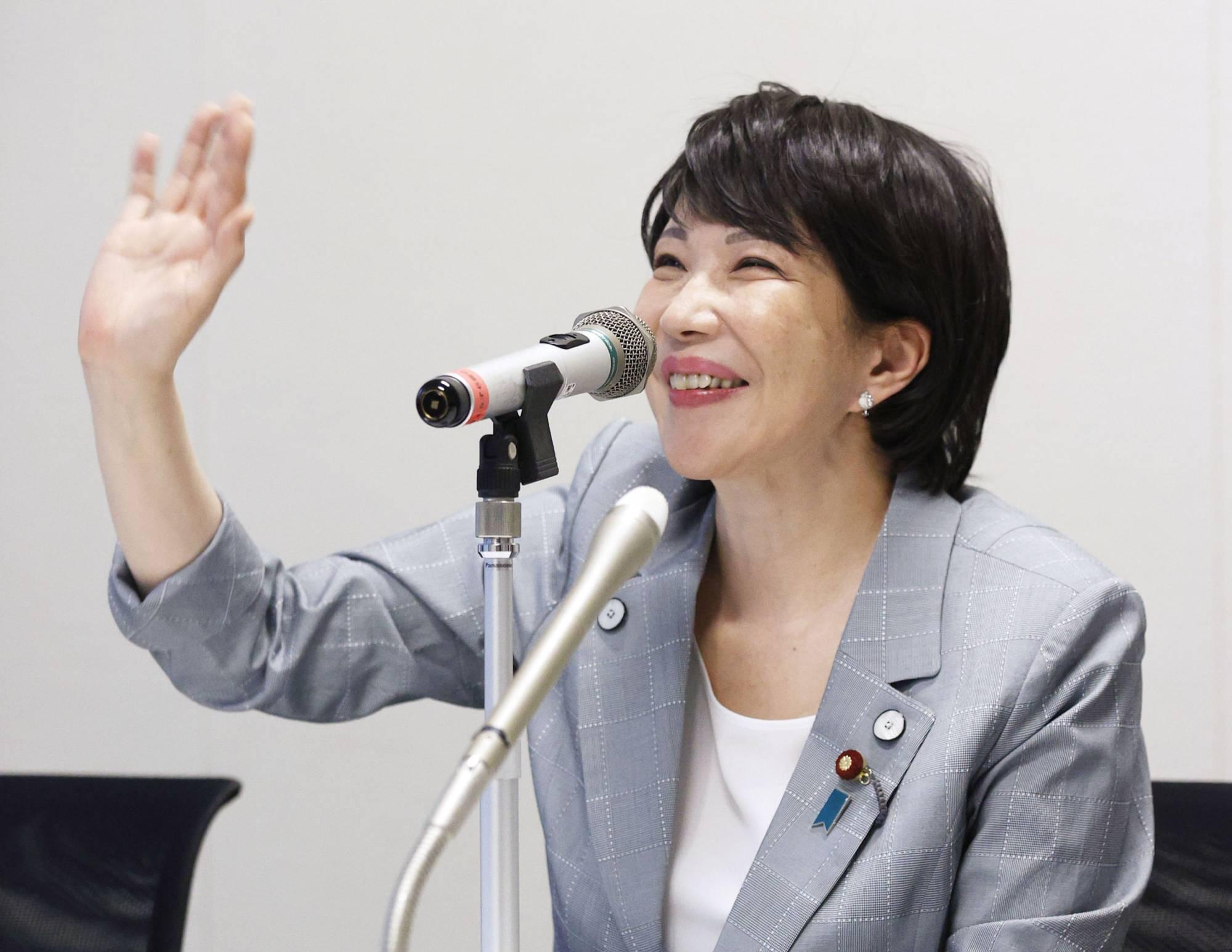News and features from the most widely read English-newspaper in Japan.
Our comment policy can be found here: https://www.japantimes.co.jp/about-us/commenting-policy
News and features from the most widely read English newspaper in Japan.
1897年創刊。現存する日本最古の英字新聞・ジャパンタイムズが発信する国内外の社会、スポーツ、政治、経済ニュースと、さまざまなジャンルの特集記事。
Our comment policy can be found here: https://www.japantimes.co.jp/about-us/commenting-policy
News and features from the most widely read English newspaper in Japan.
1897年創刊。現存する日本最古の英字新聞・ジャパンタイムズが発信する国内外の社会、スポーツ、政治、経済ニュースと、さまざまなジャンルの特集記事。
-
4 people like this
-
0 Posts
-
0 Photos
-
0 Videos
-
History and Facts
Recent Updates
-
A look at the state of our intestinal health delivers a real gut punch
Hidden deep within all of us are vast coils called guts — intestines. The fitness magazine Tarzan this month invites us to contemplate them.
They’re in bad shape and getting worse, it seems. Even at best, the subject is an unpleasant one. Eating is fun, dining is culture, but digestion is something we’d rather not talk about, unless we have to — which is to say, when it betrays us.
“Things we’d rather not talk about” is a theme in itself. The women’s weekly Josei Jishin this month steps boldly into it, instancing the aches, pains and itches in unmentionable places, to say nothing of body odor, hair loss and the emotional stress they impose as we and the population at large age.
Unmentionable or not, the analysis of fecal matter, Tarzan observes, is key to the training of athletes at the highest level. Trainers rely on it in their quest for the perfect athletic diet. Bio-anthropologists also probe its secrets, and when American and Mexican scientists recently dug up buried mounds of human waste dating back 2,000 years, they saw in it fresh means of confirming a growing suspicion — to wit, that the bacteriological diversity in the human intestine is in sad decline.
It’s a whole new world in there, teeming with life, inhabited by 100 trillion-odd bacteria of roughly 1,000 types, some good, some not — but diversity, says Tarzan, is the main thing. Its loss puts the digestive process at risk, with collateral damage rippling through our anatomy and psychology, digestion being central to just about everything we do, consciously or unconsciously.
We moderns do everything wrong, Tarzan seems to feel. It’s interesting how far astray we’ve gone, given the means at hand — knowledge, productivity, technology — for perfection. Eating right, exercising adequately and resting appropriately are not difficult — or wouldn’t be if society as a whole didn’t militate against them, keeping us busy, hurried and harassed beyond the body’s natural capacity for stress. Japan’s rejection of its indigenous health foods — fish, soybeans, seaweed — in favor of fast food and deep-fried meat generates frequent warnings seldom heeded. The prime example of technology abuse is the ubiquitous smartphone, whose tendency to absorb us all day and into the night plays hell with the nervous system, with dreadful implications, Tarzan says, for the digestive system.
Pre-industrial humankind had a bacteriological diversity we today can only envy. That raises a question: Why enviable, since we’re so much healthier and longer-lived today? True, but progress is not irreversible, and we are in danger of reversing it. The gradual change down the centuries — rapid in Japan’s case — from plant-based to meat-based diets set us, biologically speaking, on a slow downward slope that steepened around 1995.
What happened then? Not one specific thing but a rising crescendo of small things whose impact showed in researchers’ surveys of wide swaths of population — one showing, for instance, a decline in children’s daily fiber intake from an average 20 grams in 1995 to 7 grams in 2020.
Broadly speaking, says Tarzan, the following factors favor bacteriological diversity in children: large families, pets, vegetables, mountains and rivers within view if not reach, and sleep rather than antibiotics as the default remedy for minor illness.
Urbanization, nuclear one-child families, fast food, a preference for antiseptic over soap and water — in short, hyper-cleanliness in an increasingly denatured environment — are almost certainly with us to stay, short-term, and it’s the rare individual who makes lifestyle decisions with intestinal bacteria in mind.
Still, two related facts of life may merit consideration. First, the intestinal environment is pretty well fixed during the first three years of life. Children deprived of the best then can’t, growing into awareness, backtrack. Too late.
Second, what we do to ourselves, bacteriologically and intestinally speaking — not to mention what COVID-19 is doing to us; its impact is still being assessed but is bound to be considerable — marks not only ourselves and our children but theirs, no one knows how far into the future.
Well, enough about the gut. The body imposes on us in so many ways; it makes one sick to think about it. At its best it’s a friend and ally, and Tarzan is right to urge us to stay in its good graces, but its favor is easily lost, and there are times when it seems bent on making life impossible. Like an obnoxious child it will do anything for attention. It aches, smells, itches — more and more as we age, Josei Jishin notes, and Japan is aging fast.
We all have bodies, we all suffer the body’s impertinence, and yet the symptoms in question, though shared, are hard to talk about, and therefore isolating. Whether social taboo causes personal embarrassment, or vice versa, is a chicken-and-egg conundrum, probably insoluble. It matters little. The consequences matter a great deal, though. From such trivia as mouth odor, athlete’s foot and the overpowering need to urinate when you’re not home alone — three among numerous issues Josei Jishin raises — come, at worst, depression, alcoholism and heightened irritability that strains social and family life to the breaking point, sometimes beyond. None of this is peculiar to our own time; it probably goes all the way back to the beginning of things; one wonders idly whether the Jomon folk of prehistoric Japan found ways to cope with it. They, of course, were less sensitive than we are.A look at the state of our intestinal health delivers a real gut punch Hidden deep within all of us are vast coils called guts — intestines. The fitness magazine Tarzan this month invites us to contemplate them. They’re in bad shape and getting worse, it seems. Even at best, the subject is an unpleasant one. Eating is fun, dining is culture, but digestion is something we’d rather not talk about, unless we have to — which is to say, when it betrays us. “Things we’d rather not talk about” is a theme in itself. The women’s weekly Josei Jishin this month steps boldly into it, instancing the aches, pains and itches in unmentionable places, to say nothing of body odor, hair loss and the emotional stress they impose as we and the population at large age. Unmentionable or not, the analysis of fecal matter, Tarzan observes, is key to the training of athletes at the highest level. Trainers rely on it in their quest for the perfect athletic diet. Bio-anthropologists also probe its secrets, and when American and Mexican scientists recently dug up buried mounds of human waste dating back 2,000 years, they saw in it fresh means of confirming a growing suspicion — to wit, that the bacteriological diversity in the human intestine is in sad decline. It’s a whole new world in there, teeming with life, inhabited by 100 trillion-odd bacteria of roughly 1,000 types, some good, some not — but diversity, says Tarzan, is the main thing. Its loss puts the digestive process at risk, with collateral damage rippling through our anatomy and psychology, digestion being central to just about everything we do, consciously or unconsciously. We moderns do everything wrong, Tarzan seems to feel. It’s interesting how far astray we’ve gone, given the means at hand — knowledge, productivity, technology — for perfection. Eating right, exercising adequately and resting appropriately are not difficult — or wouldn’t be if society as a whole didn’t militate against them, keeping us busy, hurried and harassed beyond the body’s natural capacity for stress. Japan’s rejection of its indigenous health foods — fish, soybeans, seaweed — in favor of fast food and deep-fried meat generates frequent warnings seldom heeded. The prime example of technology abuse is the ubiquitous smartphone, whose tendency to absorb us all day and into the night plays hell with the nervous system, with dreadful implications, Tarzan says, for the digestive system. Pre-industrial humankind had a bacteriological diversity we today can only envy. That raises a question: Why enviable, since we’re so much healthier and longer-lived today? True, but progress is not irreversible, and we are in danger of reversing it. The gradual change down the centuries — rapid in Japan’s case — from plant-based to meat-based diets set us, biologically speaking, on a slow downward slope that steepened around 1995. What happened then? Not one specific thing but a rising crescendo of small things whose impact showed in researchers’ surveys of wide swaths of population — one showing, for instance, a decline in children’s daily fiber intake from an average 20 grams in 1995 to 7 grams in 2020. Broadly speaking, says Tarzan, the following factors favor bacteriological diversity in children: large families, pets, vegetables, mountains and rivers within view if not reach, and sleep rather than antibiotics as the default remedy for minor illness. Urbanization, nuclear one-child families, fast food, a preference for antiseptic over soap and water — in short, hyper-cleanliness in an increasingly denatured environment — are almost certainly with us to stay, short-term, and it’s the rare individual who makes lifestyle decisions with intestinal bacteria in mind. Still, two related facts of life may merit consideration. First, the intestinal environment is pretty well fixed during the first three years of life. Children deprived of the best then can’t, growing into awareness, backtrack. Too late. Second, what we do to ourselves, bacteriologically and intestinally speaking — not to mention what COVID-19 is doing to us; its impact is still being assessed but is bound to be considerable — marks not only ourselves and our children but theirs, no one knows how far into the future. Well, enough about the gut. The body imposes on us in so many ways; it makes one sick to think about it. At its best it’s a friend and ally, and Tarzan is right to urge us to stay in its good graces, but its favor is easily lost, and there are times when it seems bent on making life impossible. Like an obnoxious child it will do anything for attention. It aches, smells, itches — more and more as we age, Josei Jishin notes, and Japan is aging fast. We all have bodies, we all suffer the body’s impertinence, and yet the symptoms in question, though shared, are hard to talk about, and therefore isolating. Whether social taboo causes personal embarrassment, or vice versa, is a chicken-and-egg conundrum, probably insoluble. It matters little. The consequences matter a great deal, though. From such trivia as mouth odor, athlete’s foot and the overpowering need to urinate when you’re not home alone — three among numerous issues Josei Jishin raises — come, at worst, depression, alcoholism and heightened irritability that strains social and family life to the breaking point, sometimes beyond. None of this is peculiar to our own time; it probably goes all the way back to the beginning of things; one wonders idly whether the Jomon folk of prehistoric Japan found ways to cope with it. They, of course, were less sensitive than we are.0 Comments 0 Shares 0 ReviewsPlease log in to like, share and comment! -
Will fiscal consolidation be a priority for ruling party's new leader?
Japan looks poised to put even less emphasis on fiscal consolidation under the new leader of the ruling Liberal Democratic Party when the successor to Prime Minister Yoshihide Suga forms a new government.
Most candidates for the Sept. 29 party leadership race have pledged large-scale economic measures ahead of the start of campaigning on Friday as they bid to address the coronavirus crisis and return growth to the pandemic-hit economy.
Each is playing up a bold economic package ahead of a general election that must be held by Nov. 28.
The winner will replace Suga, who announced his intention to resign earlier in the month, as prime minister given the party controls the powerful lower house of parliament. The next leader will be tasked with attending to Japan’s fiscal health, which is the worst among major developed countries.
The world’s third-largest economy is saddled with public debt of more than ¥1,200 trillion ($10 trillion), or over 200% of its annual gross domestic product, as of the end of March.
Among three main contenders, former communications minister Sanae Takaichi appears more likely to be proactive on fiscal spending than former Foreign Minister Fumio Kishida and vaccination minister Taro Kono, analysts say.
“The three contenders can distinguish themselves by launching their own fiscal policy and growth strategy, and Ms. Takaichi’s fiscal policy looks most expansionary and (under which) it would be easy to increase budget deficits,” said Yoshimasa Maruyama, chief economist at SMBC Nikko Securities.
Takaichi, who seeks to be the first female prime minister in Japan, said the government’s goal of putting its primary balance into the black by fiscal 2025 should be shelved until the Bank of Japan achieves its 2% inflation target.
The primary balance — tax revenue minus spending other than debt-servicing — is regarded as an important fiscal soundness indicator.
According to the initial budget for the current fiscal year through March 2022, Japan’s primary deficit has more than doubled to ¥20.36 trillion from the amount in the previous year’s initial plan, due to a decrease in tax revenue and increase in expenditure under the pandemic.
Takaichi said at a news conference last week that her economic plan is a remodeled version of former Prime Minister Shinzo Abe’s economics program, dubbed “Abenomics,” which consists of “three arrows” of monetary easing, agile fiscal spending to deal with the pandemic and other possible emergencies, boosting investment in crisis management, and economic growth.
Under what she calls “Sanaenomics,” Takaichi plans to spend around ¥100 trillion over 10 years.Will fiscal consolidation be a priority for ruling party's new leader? Japan looks poised to put even less emphasis on fiscal consolidation under the new leader of the ruling Liberal Democratic Party when the successor to Prime Minister Yoshihide Suga forms a new government. Most candidates for the Sept. 29 party leadership race have pledged large-scale economic measures ahead of the start of campaigning on Friday as they bid to address the coronavirus crisis and return growth to the pandemic-hit economy. Each is playing up a bold economic package ahead of a general election that must be held by Nov. 28. The winner will replace Suga, who announced his intention to resign earlier in the month, as prime minister given the party controls the powerful lower house of parliament. The next leader will be tasked with attending to Japan’s fiscal health, which is the worst among major developed countries. The world’s third-largest economy is saddled with public debt of more than ¥1,200 trillion ($10 trillion), or over 200% of its annual gross domestic product, as of the end of March. Among three main contenders, former communications minister Sanae Takaichi appears more likely to be proactive on fiscal spending than former Foreign Minister Fumio Kishida and vaccination minister Taro Kono, analysts say. “The three contenders can distinguish themselves by launching their own fiscal policy and growth strategy, and Ms. Takaichi’s fiscal policy looks most expansionary and (under which) it would be easy to increase budget deficits,” said Yoshimasa Maruyama, chief economist at SMBC Nikko Securities. Takaichi, who seeks to be the first female prime minister in Japan, said the government’s goal of putting its primary balance into the black by fiscal 2025 should be shelved until the Bank of Japan achieves its 2% inflation target. The primary balance — tax revenue minus spending other than debt-servicing — is regarded as an important fiscal soundness indicator. According to the initial budget for the current fiscal year through March 2022, Japan’s primary deficit has more than doubled to ¥20.36 trillion from the amount in the previous year’s initial plan, due to a decrease in tax revenue and increase in expenditure under the pandemic. Takaichi said at a news conference last week that her economic plan is a remodeled version of former Prime Minister Shinzo Abe’s economics program, dubbed “Abenomics,” which consists of “three arrows” of monetary easing, agile fiscal spending to deal with the pandemic and other possible emergencies, boosting investment in crisis management, and economic growth. Under what she calls “Sanaenomics,” Takaichi plans to spend around ¥100 trillion over 10 years.0 Comments 0 Shares 0 Reviews -
Japan to dispose of contaminated water at U.S. military base in Okinawa
The Japanese government has agreed with the U.S. government to dispose of contaminated water stored at the U.S. Marine Corps’ Air Station Futenma in Ginowan, Okinawa Prefecture, Japan’s Defense Ministry said Friday.
Japan’s Defense Ministry will shoulder the estimated ¥92 million cost of disposing the water containing perfluorooctanesulfonic acid, a toxic substance known as PFOS.
PFOS had been used widely, including in fire-extinguishing foam. But Japan banned the import and manufacture of PFOS in April 2010 due in part to its cancer-causing properties.
According to the U.S. side, 360,000 liters of water containing PFOS are kept in a storage tank beneath a hangar at the Futenma base.
If rainwater flows into the underground tank, the stored water could overflow.
On Aug. 26, the U.S. military released some of the water into a public sewage line without prior authorization, prompting the Japanese government to lodge a protest over the discharge.
The Japanese and U.S. governments also agreed to discuss repairing the hangar to prevent rainwater flows into the tank.Japan to dispose of contaminated water at U.S. military base in Okinawa The Japanese government has agreed with the U.S. government to dispose of contaminated water stored at the U.S. Marine Corps’ Air Station Futenma in Ginowan, Okinawa Prefecture, Japan’s Defense Ministry said Friday. Japan’s Defense Ministry will shoulder the estimated ¥92 million cost of disposing the water containing perfluorooctanesulfonic acid, a toxic substance known as PFOS. PFOS had been used widely, including in fire-extinguishing foam. But Japan banned the import and manufacture of PFOS in April 2010 due in part to its cancer-causing properties. According to the U.S. side, 360,000 liters of water containing PFOS are kept in a storage tank beneath a hangar at the Futenma base. If rainwater flows into the underground tank, the stored water could overflow. On Aug. 26, the U.S. military released some of the water into a public sewage line without prior authorization, prompting the Japanese government to lodge a protest over the discharge. The Japanese and U.S. governments also agreed to discuss repairing the hangar to prevent rainwater flows into the tank.0 Comments 0 Shares 0 Reviews -
New COVID-19 cases among kids in Japan surged in August
New coronavirus cases confirmed among children in Japan totaled 17,734 in August, more than tripling from the previous month, the education ministry has said.
The virus spread widely among kids, particularly elementary school children, with new cases increasing nearly fourfold, the ministry warned Friday.
Among the total cases, 340 were among kindergarten pupils, 8,031 in elementary school children, 5,520 among junior high school students, 3,703 in high school students, with 140 found in students at special-needs schools.
The cumulative number of new cases among children between June last year and last month came to 54,149, meaning 30% were detected in August alone, the ministry said. So far, it added, two children in their 10s have developed severe symptoms.
Meanwhile, another survey conducted by the ministry found that as of Monday, 3.2% of local education boards were temporarily closing elementary schools, while 3.7% were closing junior high schools and 4.2% high schools.
The results suggest that most schools, some of which extended summer breaks to prevent infections from spreading in classrooms, are returning to normal operations, the ministry said.
As of Sept. 1, 12.4% of elementary schools had been temporarily closed, while 12.8 of junior high schools and 19.2% of high schools had been shut at some point.New COVID-19 cases among kids in Japan surged in August New coronavirus cases confirmed among children in Japan totaled 17,734 in August, more than tripling from the previous month, the education ministry has said. The virus spread widely among kids, particularly elementary school children, with new cases increasing nearly fourfold, the ministry warned Friday. Among the total cases, 340 were among kindergarten pupils, 8,031 in elementary school children, 5,520 among junior high school students, 3,703 in high school students, with 140 found in students at special-needs schools. The cumulative number of new cases among children between June last year and last month came to 54,149, meaning 30% were detected in August alone, the ministry said. So far, it added, two children in their 10s have developed severe symptoms. Meanwhile, another survey conducted by the ministry found that as of Monday, 3.2% of local education boards were temporarily closing elementary schools, while 3.7% were closing junior high schools and 4.2% high schools. The results suggest that most schools, some of which extended summer breaks to prevent infections from spreading in classrooms, are returning to normal operations, the ministry said. As of Sept. 1, 12.4% of elementary schools had been temporarily closed, while 12.8 of junior high schools and 19.2% of high schools had been shut at some point.0 Comments 0 Shares 0 Reviews -
Tokyo Marathon postponed from October until March 2022
The Tokyo Marathon 2021, scheduled for Oct. 17, will be postponed until March 6, 2022, the Tokyo Marathon Foundation said Friday.
The decision, adopted at Friday’s extraordinary board meeting of the foundation in Tokyo, came as the government’s COVID-19 state of emergency has been extended until Sept. 30 for Tokyo and other areas.
According to conditions for holding the Tokyo Marathon, the event cannot take place if a coronavirus state of emergency is in place a month or less before it.
Runners who had planned to take part in the event next month will get priority to run in the 2022 event if they wish to do so.
If they do not run in the 2022 event, their participation fees and costs for polymerase chain reaction (PCR) tests for the virus will be fully refunded.
The Tokyo Marathon 2022, originally scheduled to take place on March 6, 2022, will be canceled due to the postponement of the 2021 race.
Runners who had the right to take part in the Tokyo Marathon 2022 will be asked about their plans for coming races.
The Tokyo Marathon 2021 was initially scheduled to be held on March 7 this year. It was put off until October due to the impact of the coronavirus pandemic.
Organizers had made efforts to hold the event next month by reducing the number of participants from 38,000 to 25,000 and dropping a plan to accept nonelite runners who live overseas.Tokyo Marathon postponed from October until March 2022 The Tokyo Marathon 2021, scheduled for Oct. 17, will be postponed until March 6, 2022, the Tokyo Marathon Foundation said Friday. The decision, adopted at Friday’s extraordinary board meeting of the foundation in Tokyo, came as the government’s COVID-19 state of emergency has been extended until Sept. 30 for Tokyo and other areas. According to conditions for holding the Tokyo Marathon, the event cannot take place if a coronavirus state of emergency is in place a month or less before it. Runners who had planned to take part in the event next month will get priority to run in the 2022 event if they wish to do so. If they do not run in the 2022 event, their participation fees and costs for polymerase chain reaction (PCR) tests for the virus will be fully refunded. The Tokyo Marathon 2022, originally scheduled to take place on March 6, 2022, will be canceled due to the postponement of the 2021 race. Runners who had the right to take part in the Tokyo Marathon 2022 will be asked about their plans for coming races. The Tokyo Marathon 2021 was initially scheduled to be held on March 7 this year. It was put off until October due to the impact of the coronavirus pandemic. Organizers had made efforts to hold the event next month by reducing the number of participants from 38,000 to 25,000 and dropping a plan to accept nonelite runners who live overseas.0 Comments 0 Shares 0 Reviews -
Why Shinzo Abe is backing a little-known hawk
It’s not just because the former PM thinks Sanae Takaichi is his protege
Why is former Prime Minister Shinzo Abe throwing his weight behind Sanae Takaichi — a politician little known among the public beyond her conservative views?
Perhaps it’s because Abe genuinely believes former internal affairs minister Takaichi is the right person for continuity and has a shared vision for the country. Or maybe as the one who started womenomics, Abe thinks it’s high time Japan chooses a woman to run the world’s third-largest economy.
There is likely some truth behind both those motives. But it’s also a maneuver by the former prime minister so that the heavyweights of the Liberal Democratic Party can maintain control of the increasingly fluid political situation within Japan’s governing party.
The LDP presidential race, which formally began Friday, is becoming increasingly unpredictable because of the election’s format this time around, which gives substantial weight to rank-and-file votes that are more reflective of public opinion.
The race is tight, fought among Takaichi, former Foreign Minister Fumio Kishida, administrative reform minister Taro Kono and former internal affairs minister Seiko Noda. If opinion polls are any indication, Kono is by far the front-runner among the public — but some within the party are concerned that the reformist could usher in radical change and wreck the LDP’s well-established system.
The LDP presidential election has always been a numbers game. In the past, that game was played almost entirely within the confines of the party headquarters in Tokyo, but in this upcoming race, it is the LDP’s local chapters that stand to shape the outcome.
When the LDP’s sitting members of parliament cast their votes on Sept. 29, the party branch in each prefecture will gather and count all the ballots from rank-and-file members throughout the country. These branches will be apportioned an equal share of ballots as the party’s sitting parliamentarians. It is that parity in voting strength that has changed the calculus for LDP leaders.
That parity did not always exist; rather, the rules for the LDP presidential election have evolved over time. Originally, it was only sitting parliamentarians who could vote. If a candidate could not achieve a majority in the first round, it would go to a second round with only the top two vote-getters.
The two-round format has remained unchanged, but the party decided to incorporate some representation from the local chapters in 1978. It was not until 2014 that the LDP changed its rules to allocate an equal number of votes between parliamentary members and local chapters. This, many party members believed, would help ensure that local chapters’ voices are heard and help break the power that the LDP’s factions and elites have long held over the party. It should come as no surprise that the party’s secretary-general at the time was the reform-minded former Defense Minister Shigeru Ishiba.
The first time the new rules were used was in 2018, when Ishiba went head-to-head with Abe. In that election, the LDP heavyweights were unconcerned with local chapter votes because Abe commanded almost all the parliamentary-level votes and had a comfortable level of support from rank-and-file members.
The same was not true for the election last year. Party leaders understood the implications of the local chapter votes given Ishiba’s popularity with LDP members outside of Tokyo. In other words, they knew that if the local chapters were given an equal share of votes, it might have enabled Ishiba to win. What they did was reduce the number of local chapter votes to only three per prefecture for a total of 141 compared to the 394 votes for sitting parliamentarians. With voting heavily weighted toward members of the Diet, the LDP’s factions could guarantee a victory for Yoshihide Suga.Why Shinzo Abe is backing a little-known hawk It’s not just because the former PM thinks Sanae Takaichi is his protege Why is former Prime Minister Shinzo Abe throwing his weight behind Sanae Takaichi — a politician little known among the public beyond her conservative views? Perhaps it’s because Abe genuinely believes former internal affairs minister Takaichi is the right person for continuity and has a shared vision for the country. Or maybe as the one who started womenomics, Abe thinks it’s high time Japan chooses a woman to run the world’s third-largest economy. There is likely some truth behind both those motives. But it’s also a maneuver by the former prime minister so that the heavyweights of the Liberal Democratic Party can maintain control of the increasingly fluid political situation within Japan’s governing party. The LDP presidential race, which formally began Friday, is becoming increasingly unpredictable because of the election’s format this time around, which gives substantial weight to rank-and-file votes that are more reflective of public opinion. The race is tight, fought among Takaichi, former Foreign Minister Fumio Kishida, administrative reform minister Taro Kono and former internal affairs minister Seiko Noda. If opinion polls are any indication, Kono is by far the front-runner among the public — but some within the party are concerned that the reformist could usher in radical change and wreck the LDP’s well-established system. The LDP presidential election has always been a numbers game. In the past, that game was played almost entirely within the confines of the party headquarters in Tokyo, but in this upcoming race, it is the LDP’s local chapters that stand to shape the outcome. When the LDP’s sitting members of parliament cast their votes on Sept. 29, the party branch in each prefecture will gather and count all the ballots from rank-and-file members throughout the country. These branches will be apportioned an equal share of ballots as the party’s sitting parliamentarians. It is that parity in voting strength that has changed the calculus for LDP leaders. That parity did not always exist; rather, the rules for the LDP presidential election have evolved over time. Originally, it was only sitting parliamentarians who could vote. If a candidate could not achieve a majority in the first round, it would go to a second round with only the top two vote-getters. The two-round format has remained unchanged, but the party decided to incorporate some representation from the local chapters in 1978. It was not until 2014 that the LDP changed its rules to allocate an equal number of votes between parliamentary members and local chapters. This, many party members believed, would help ensure that local chapters’ voices are heard and help break the power that the LDP’s factions and elites have long held over the party. It should come as no surprise that the party’s secretary-general at the time was the reform-minded former Defense Minister Shigeru Ishiba. The first time the new rules were used was in 2018, when Ishiba went head-to-head with Abe. In that election, the LDP heavyweights were unconcerned with local chapter votes because Abe commanded almost all the parliamentary-level votes and had a comfortable level of support from rank-and-file members. The same was not true for the election last year. Party leaders understood the implications of the local chapter votes given Ishiba’s popularity with LDP members outside of Tokyo. In other words, they knew that if the local chapters were given an equal share of votes, it might have enabled Ishiba to win. What they did was reduce the number of local chapter votes to only three per prefecture for a total of 141 compared to the 394 votes for sitting parliamentarians. With voting heavily weighted toward members of the Diet, the LDP’s factions could guarantee a victory for Yoshihide Suga.0 Comments 0 Shares 0 Reviews
More Stories



